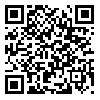BibTeX | RIS | EndNote | Medlars | ProCite | Reference Manager | RefWorks
Send citation to:
URL: http://hakim.tums.ac.ir/article-1-1027-en.html
Bayatani A * (MA), Sadeghi A (MA)
Department of Remote Sensing and GIS, Earth Sciences Faculty, Shahid Beheshi University, Tehran, Iran
Received: 12 Oct 2011, Accepted: 13 Jul 2012
Abstract
Introduction: Identifying pathogenic factors, their spatial pattern of transmission, geographical distribution of diseases, and environmental factors affecting their severity have significant contributions to public health and disease management. The precise management and appropriate clinical decision-making is only possible through analysis of a huge amount of spatial data. Geographic Information System (GIS) as an extremely useful tool for analyzing complex data can play a vital role in health and treatment sectors.
Method: This study aimed to investigate the relationship between environmental factors and geographical distribution of Cutaneous Leishmaniasis in Iran, using GIS framework. First, conceptual model of study was defined. In the next stage, spatial information layers and disease data were collected. Finally, high risk geographical areas were identified using statistical and spatial analysis.
Results: In this study, the Boolean Logic Model was used in order to integrate information layers, visualizing of spatial distribution of disease and designing map of high-risk areas. In this map, Isfahan, Razavi Khorasan, Markazi, Fars, Southern Khorasan, Kerman, Ghom, Tehran, Ghazvin and Semnan provinces were identified, respectively, as epidemic areas of Cutaneous Leishmaniasis in Iran.
Conclusion: Priority of pathogenic factors and finding spatial distribution of diseases are possible by combination of statistical and spatial analysis and modeling in the GIS environment. It can be used as a very useful tool in management and decision-making in public health.
Key words: Geographic Information System (GIS), cutaneous leishmaniasis, spatial analysis
Please cite this article as follows:
Bayatani A , Sadeghi A . Spatial Analysis of Environmental Factors of Cutaneous Leishmaniasis in Iran using GIS. Hakim Research Journal 2012 15(2): 158- 165.
* Corresponding Author: Azadi Sq. Meraj Ave. Geological Survey of Iran (GSI), Remote sensing group, Tehran. Iran. Tel: +98- 21- 645 92353, Cell: +98- 912- 770 6393, E-mail: a.bayatani@yahoo.com
Received: 2012/09/30 | Published: 2012/07/15
| Rights and permissions | |
 |
This work is licensed under a Creative Commons Attribution-NonCommercial 4.0 International License. |





